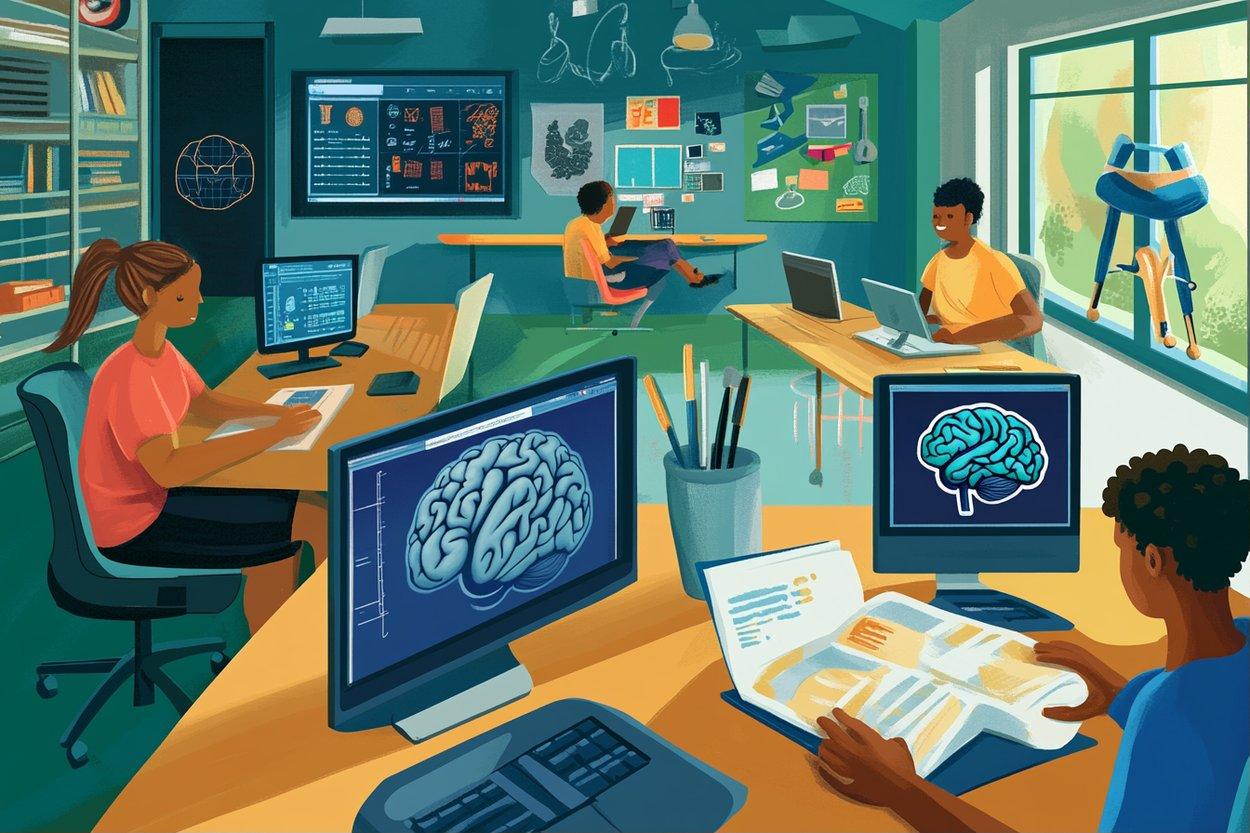Chromesthesia: When Music Paints the Mind
In the realm where sound and color intertwine, a fascinating neurological phenomenon takes center stage. Chromesthesia, a form of synesthesia where individuals perceive colors when hearing music, offers a captivating glimpse into the intricate workings of the human brain. This article delves into the vibrant world of chromesthesia, exploring its origins, manifestations, and the profound impact it has on artists and audiences alike.

Unraveling the Neural Tapestry
The exact mechanisms behind chromesthesia remain a subject of ongoing research. Neuroscientists theorize that it results from increased neural connections between the auditory and visual processing areas of the brain. This cross-wiring allows sound information to spill over into regions typically reserved for visual processing, resulting in the simultaneous perception of sound and color.
A Spectrum of Experiences
Chromesthesia manifests differently for each individual. Some perceive colors as abstract shapes or patterns, while others see them as vivid, detailed landscapes. The colors associated with specific sounds can be consistent for an individual but vary widely between different people with chromesthesia. For instance, one person might perceive the note C as red, while another sees it as blue.
From Curiosity to Creative Catalyst
Far from being a mere curiosity, chromesthesia has profoundly influenced the arts. Numerous musicians, painters, and other creatives have drawn inspiration from their chromesthetic experiences. Russian composer Alexander Scriabin, who associated musical keys with specific colors, even created a color organ to project colored lights during performances of his symphonies.
The Digital Renaissance of Chromesthesia
In the digital age, chromesthesia has found new avenues for expression and exploration. Music visualization software and virtual reality experiences attempt to recreate the chromesthetic experience for those without the condition. These technologies not only provide a glimpse into the world of chromesthetes but also open up new possibilities for artistic expression and audience engagement.
Chromesthesia in Popular Culture
The concept of seeing music has captured the public imagination, appearing in various forms of media. Films, books, and music videos have attempted to portray the chromesthetic experience, often using vibrant visual effects synchronized with music. This representation has raised awareness about chromesthesia and sparked conversations about the diverse ways humans perceive the world.
Research and Educational Implications
The study of chromesthesia extends beyond the arts, offering valuable insights into brain function and perception. Researchers are exploring how understanding chromesthesia might lead to new approaches in education, particularly in music and art instruction. The potential for using color associations to enhance memory and learning processes is an exciting frontier in cognitive science.
Challenges and Misconceptions
Despite growing awareness, chromesthesia remains misunderstood by many. Some skeptics dismiss it as imagination or exaggeration, while others romanticize it as a supernatural ability. Educating the public about the neurological basis of chromesthesia is crucial for fostering understanding and acceptance of this unique perceptual experience.
The Future of Chromesthetic Art
As technology advances, the potential for chromesthetic-inspired art continues to expand. From interactive installations that translate music into real-time visual displays to AI algorithms that generate color patterns based on audio input, the fusion of sound and color is entering new territories. These innovations promise to create immersive experiences that bridge the gap between the chromesthetic perception and the standard auditory experience.
In conclusion, chromesthesia offers a fascinating window into the complexities of human perception. It challenges our understanding of sensory experiences and blurs the lines between different forms of artistic expression. As research progresses and technology evolves, chromesthesia may not only continue to inspire artists but also reshape how we all experience and interact with music and color. The symphony of the senses that chromesthetes experience reminds us of the rich, multifaceted nature of human perception and the endless possibilities for creativity and innovation that lie at the intersection of our senses.





